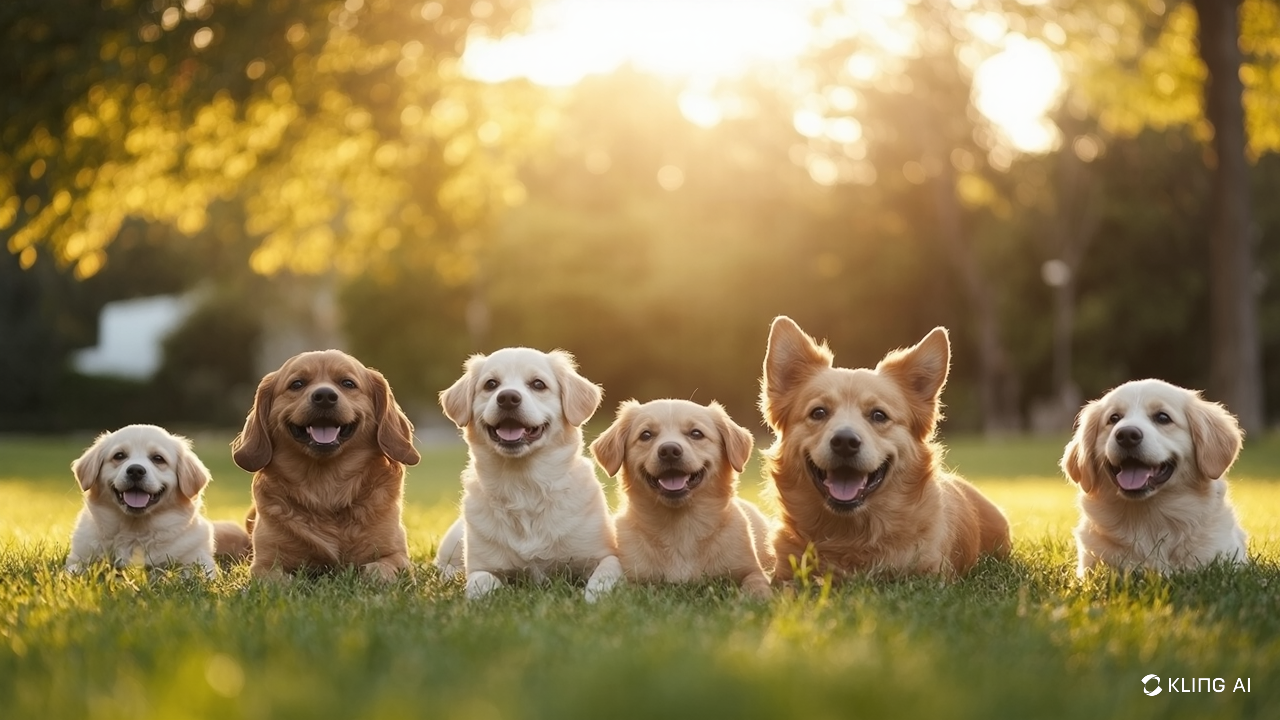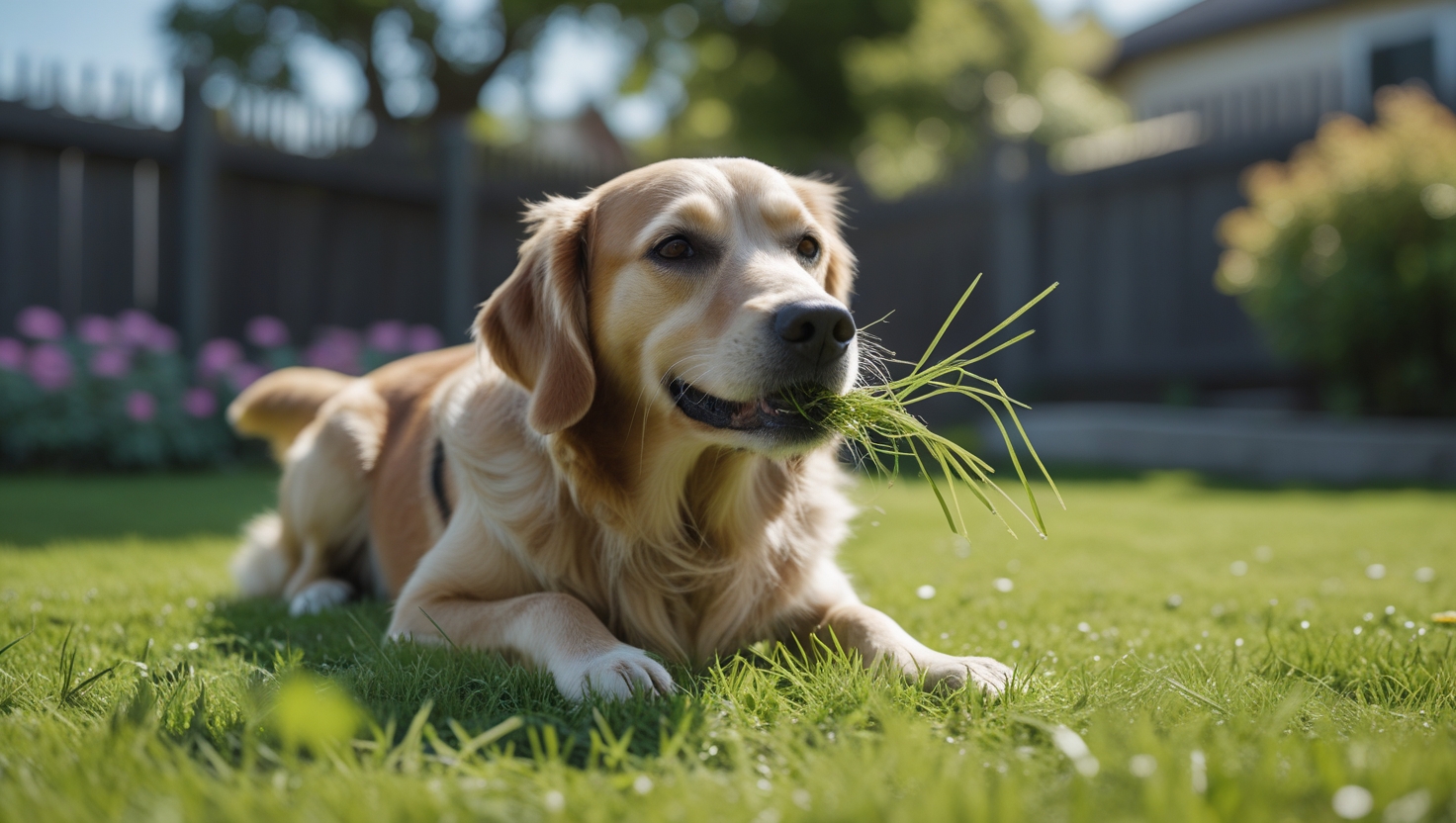
The world of luxury dog ownership is as fascinating as it is exclusive. While any dog can offer unconditional love and companionship, certain rare breeds have become status symbols among the wealthy elite, with price tags that can reach into the millions. But what exactly makes a dog "expensive," and why are some breeds valued more highly than others?
The intersection of rarity, bloodline purity, and cultural significance creates a market where certain dogs command astronomical prices. For the ultra-wealthy, these canine companions aren't just pets—they're living symbols of prestige, exclusivity, and refined taste.
In this comprehensive guide, we'll explore the fascinating world of high-value canines, examining the factors that contribute to their eye-watering price tags and profiling the ten most expensive dog breeds on the planet today. From the million-dollar Tibetan Mastiff to the royal Cavalier King Charles Spaniel, these luxury breeds offer a glimpse into the exclusive world of elite dog ownership.
Before diving into specific breeds, it's essential to understand the factors that contribute to a dog's price. Unlike everyday purchases, the value of a purebred dog is influenced by a complex web of factors:
The most fundamental economic principle driving high dog prices is scarcity. Breeds with limited populations—whether due to geographic isolation, breeding difficulties, or strict registry standards—naturally command higher prices. The Löwchen, for instance, was once considered the world's rarest dog, with fewer than 300 registered worldwide at one point. This extreme scarcity drove prices to astronomical levels.
In the world of purebred dogs, lineage is everything. Dogs with champion bloodlines—those whose ancestors have won prestigious shows or competitions—fetch significantly higher prices than those with unremarkable family trees. A puppy whose parents, grandparents, and great-grandparents have earned titles in major competitions can cost 5-10 times more than one without this pedigree.
Breeding high-quality dogs is an expensive endeavor. Responsible breeders invest heavily in health testing, genetic screening, specialized nutrition, veterinary care, and appropriate facilities. For rare breeds with specific health concerns or complicated reproduction requirements, these costs can be substantial—and are ultimately reflected in puppy prices.
Unusual coat colors, rare markings, or distinctive physical characteristics can dramatically increase a dog's value. For instance, a blue-tongue Chow Chow with perfect blue-black pigmentation will command a higher price than one with spotty tongue coloration. Similarly, Samoyeds with pristine white coats are valued more highly than those with cream-tinged fur.
When wealthy individuals or celebrities adopt a specific breed, demand—and prices—often surge. The Cavalier King Charles Spaniel gained significant popularity after being associated with British royalty, while the Akita saw increased interest following high-profile ownership by celebrities.
With these factors in mind, let's explore the world's most expensive dog breeds and discover what makes them worth their extraordinary price tags.
Price Range: $5,000 - $1,900,000
The undisputed king of expensive dog breeds, the Tibetan Mastiff, holds the world record for the highest price ever paid for a dog—a staggering $1.9 million for a golden-haired puppy sold in China in 2014.
These massive, lion-like dogs have protected Tibetan monasteries and nomadic tribes for thousands of years. Their ability to survive in the harsh Himalayan climate has made them symbols of strength and resilience. In their native region, they're considered almost mythical creatures, believed to contain the souls of monks and nuns who weren't accepted into heaven.
The extraordinary value placed on Tibetan Mastiffs stems from their historical significance, imposing presence, and extreme rarity outside their native region. In China particularly, they've become ultimate status symbols for the ultra-wealthy, representing strength, luxury, and cultural heritage.
The record-breaking $1.9 million Tibetan Mastiff was a 200-pound golden-haired giant named Hong Dong ("Big Splash"). Purchased by a Chinese coal baron, this dog's price sent shockwaves through the international canine community. What made this particular dog worth millions? His rare red coat—resembling a lion's mane—combined with his massive size and impeccable breeding created the perfect storm of canine value.
Beyond their purchase price, Tibetan Mastiffs require significant ongoing investment. Their thick double coats need regular maintenance, they consume impressive amounts of high-quality food, and their size necessitates reinforced living spaces and specialized equipment. A proper diet alone can cost owners $2,000-$3,000 annually.
Price Range: $3,000 - $70,000
With their distinctive blue-black tongues and lion-like appearance, Chow Chows have been symbols of status and wealth for centuries.
Originating in China over 2,000 years ago, Chow Chows were companions to Chinese emperors and nobility. Their distinctive appearance—particularly their unique blue-black tongues—made them instantly recognizable symbols of imperial privilege. Ancient Chinese artifacts feature Chow-like dogs, underscoring their historical significance.
In modern times, their connection to royalty has maintained their status as luxury companions. Their distinctive appearance combines with their aloof, dignified demeanor to create a pet that exudes exclusivity and refinement.
Perhaps the most valuable physical trait of the Chow Chow is its blue-black tongue—a feature shared by only one other breed, the Chinese Shar-Pei. A Chow puppy with perfect tongue coloration commands premium prices, with some exceptional specimens selling for up to $70,000 in Asian markets.
The Chow's gorgeous coat comes with significant maintenance requirements. Professional grooming sessions for show-quality Chows can cost $250 or more per visit, with monthly appointments necessary to maintain their distinctive appearance. Over a lifetime, grooming alone can add $30,000-$50,000 to the cost of ownership.
Price Range: $4,000 - $14,000
With their pristine white coats and perpetual "smile," Samoyeds combine extreme beauty with remarkable functionality.
Originally bred by the Samoyede people of Siberia for herding reindeer and pulling sleds, these dogs developed thick white coats that could withstand temperatures of -60°F. Their characteristic "Sammy smile"—caused by the upturned corners of their mouth—prevented drooling, which could freeze in arctic conditions.
Today, the combination of their stunning appearance and friendly temperament has made them highly sought after as luxury companions. Their rarity and the difficulty of breeding them in warmer climates contribute to their high prices.
Breeding Samoyeds presents unique challenges that contribute to their high prices. Females typically have small litters of 3-6 puppies and breed only once yearly. The breed also has specific health concerns that require extensive genetic testing, adding to breeding costs.
For show-quality Samoyeds with pure white coats and perfect physical conformation, prices can reach $14,000 or more. The additional expenses of specialized care—including air conditioning requirements and extensive grooming—make them one of the most expensive breeds to maintain as well.
Price Range: $5,000 - $12,000
Once considered the rarest dog breed in the world, the Löwchen ("little lion dog") continues to command extraordinary prices despite increased breeding efforts.
In the 1970s, only 65 registered Löwchen existed worldwide, placing the breed at the brink of extinction. Dedicated breeding programs have increased their numbers, but they remain exceedingly rare, with only a few hundred puppies registered annually worldwide.
Their historical popularity among European nobility—particularly in Germany, France, and Spain—has contributed to their prestigious reputation. Renaissance paintings frequently feature these small, lion-like dogs alongside aristocratic owners.
The Löwchen's traditional haircut—shaved hindquarters with a full, flowing mane—resembles a male lion and requires professional grooming every 4-6 weeks. This distinctive appearance contributed to their popularity as status symbols in Renaissance courts, where they were carried as living hand warmers by noble ladies.
Maintaining a show-quality Löwchen costs approximately $2,500 annually in grooming alone, adding significantly to their lifetime expense.
Price Range: $2,500 - $8,500
With a lineage reportedly stretching back 5,000 years to ancient Egypt, the Pharaoh Hound combines historic prestige with extraordinary physical abilities.
Though their exact origins remain debated among canine historians, Pharaoh Hounds bear a striking resemblance to dogs depicted in ancient Egyptian artifacts. Their primary development occurred in Malta, where they were known as "Kelb tal-Fenek" (rabbit dogs) and used for hunting.
Their rarity outside their native Mediterranean region contributes significantly to their high price. Fewer than 200 puppies are registered annually in the United States, making them one of America's most uncommon breeds.
Perhaps their most distinctive feature is their ability to "blush"—their nose and ears flush pink when excited or happy. This unique physiological trait, combined with their elegant appearance and ancient heritage, makes them highly sought after by collectors of rare breeds.
While their purchase price ranks lower than some breeds on this list, their specialized care requirements—including exceptional sensitivity to anesthesia and need for particular dietary management—add to their lifetime cost.
Price Range: $2,000 - $8,000
Developed by Argentine aristocracy for big-game hunting, the Dogo Argentino combines impressive physical prowess with exclusive bloodlines.
Created by Dr. Antonio Nores Martinez, a member of Argentina's privileged class, the Dogo Argentino was developed through careful crossing of multiple breeds, including the Cordoba Fighting Dog, Great Dane, Bull Terrier, and Pointer. The goal was to create the perfect big-game hunting companion—powerful enough to take down wild boar yet loyal and manageable.
Their limited global population and strict breeding standards maintain their exclusivity and high price point. In many countries, including the United Kingdom and Australia, they're restricted or banned entirely, further limiting their availability.
The breed standard for Dogos is exceptionally strict—they must be completely white (with only a small dark patch permitted around one eye) and exhibit perfect physical proportions. Those meeting these exacting standards from champion bloodlines can cost up to $8,000.
The specialized training required for these powerful dogs adds substantially to their total cost of ownership. Professional training programs typically cost $2,000-$5,000, and many jurisdictions require special licensing and insurance for owners.
Price Range: $3,000 - $9,500
One of the world's rarest sighthounds, the Azawakh combines extreme elegance with remarkable resilience.
Originating with the Tuareg nomads of the Sahara Desert and Sahel region, Azawakhs were valued companions and hunters that could survive in one of Earth's harshest environments. Their extreme thinness—with visible bone structure—is not a defect but an adaptation to desert life.
Their cultural significance to the Tuareg people, who considered them family members rather than possessions, contributes to their mystique and value. Traditional Tuareg belief holds that these dogs carry the souls of deceased ancestors.
The difficulty of obtaining Azawakhs from their native West Africa contributes significantly to their high price. Import costs, quarantine requirements, and limited breeding stock outside their region of origin can add thousands to their purchase price.
With fewer than 200 registered annually in the United States, finding one often requires joining a waiting list and paying a substantial deposit months or years in advance.
Their desert heritage necessitates specialized care—they require warm sleeping arrangements, have unique dietary needs, and benefit from specialized veterinary knowledge. Finding medical professionals familiar with this rare breed often means traveling to specialists, adding to their lifetime cost.
Price Range: $2,000 - $14,000
With direct connections to British royalty, the Cavalier King Charles Spaniel combines blue-blooded heritage with adorable appearance.
Few breeds can claim as direct a connection to royalty as the Cavalier King Charles Spaniel, named explicitly for King Charles II of England, who was rarely seen without several at his side. Royal portraits from the 17th century feature these dogs, confirming their status as aristocratic companions.
Their continued popularity among celebrities and the wealthy elite maintains their status as luxury companions. Show-quality specimens with perfect markings and ideal head shape (called "lozenge") can cost upwards of $14,000.
The breed's popularity and value have been complicated by serious health concerns, particularly mitral valve disease and syringomyelia. Responsible breeders invest heavily in genetic testing—often costing $3,000-$5,000 per breeding pair—to reduce these risks.
These health concerns also translate to higher lifetime costs, with many owners purchasing specialized insurance policies costing $100-$200 monthly. Over a lifetime, medical expenses for a Cavalier can easily exceed $20,000.
Price Range: $1,500 - $6,000
Designated as a national monument in their native Japan, Akitas blend historical significance with imposing presence.
The Akita holds a special place in Japanese culture, symbolizing good health, happiness, and long life. Their historical role as companions to samurai warriors and the Japanese imperial family established them as symbols of loyalty and courage.
Japanese Akitas (Akita Inu) differ from American Akitas in size, appearance, and price. Authentic Japanese bloodlines, particularly those with documented imperial connections, command prices 2-3 times higher than their American counterparts.
Importing a pure Japanese Akita can cost $10,000 or more when factoring in transport, quarantine, and documentation expenses.
The Akita's strong-willed nature necessitates specialized training from an early age. Professional training programs for this powerful breed typically cost $3,000-$5,000, and many owners require ongoing professional support to manage their distinctive temperament.
The purchase price of an expensive dog breed represents only the beginning of a significant financial commitment. Luxury dog ownership comes with substantial ongoing expenses:
High-end dogs require high-end nutrition. Specialized diets for show-quality dogs can cost $300-$500 monthly, with some breeds requiring specific nutritional formulations to maintain their distinctive appearance and health.
Breeds like the Chow Chow, Löwchen, and Samoyed require regular professional grooming to maintain their characteristic appearance. Monthly sessions can cost $200-$400, with show dogs needing even more frequent attention.
Purebred dogs often have breed-specific health concerns requiring specialized veterinary care. Annual medical expenses for luxury breeds typically range from $2,000-$5,000, with emergency situations potentially adding thousands more.
High-value dogs require special arrangements when traveling. Custom crates, specialized transport services, and pet-friendly accommodations can add substantial costs for owners who travel with their canine companions.
Dogs worth thousands—or millions—require appropriate insurance coverage. Policies for ultra-valuable dogs can cost $2,000-$10,000 annually depending on the dog's value, age, and breed-specific risks.
While status certainly plays a role in the market for expensive dogs, many owners cite deeper motivations for their investment. The preservation of ancient bloodlines, connection to cultural heritage, and support for responsible breeding practices all factor into the decision to purchase a high-value dog.
The world of expensive dog breeds raises important ethical questions about breeding practices. Responsible breeders prioritize health, temperament, and genetic diversity over extreme physical characteristics that might appeal to the luxury market but compromise welfare.
Potential owners of luxury breeds should investigate breeding practices thoroughly, ensuring their purchase supports ethical breeding rather than harmful practices designed solely to produce marketable traits.
Ultimately, a dog's value isn't measured solely by its purchase price or prestigious bloodline. The companionship, joy, and loyalty these animals provide transcend their market value.
For those considering a luxury breed, balancing prestige with practicality is essential. The most expensive dog isn't necessarily the best fit for every lifestyle or living situation. Careful research into temperament, care requirements, and health concerns should guide the decision-making process.
The market for the world's most expensive dog breeds represents a fascinating intersection of history, culture, economics, and human psychology. From the million-dollar Tibetan Mastiff to the royal Cavalier King Charles Spaniel, these remarkable animals carry value far beyond their purchase price.
Their rarity, historical significance, and distinctive characteristics create a unique market where prices reflect not just the animals themselves but the prestige, tradition, and exclusivity they represent. For the fortunate few who can afford these extraordinary companions, they offer not just the universal joy of canine companionship but a living connection to ancient heritage and tradition.
Whether viewed as extravagant indulgences or valuable cultural treasures, these exceptional breeds continue to captivate our imagination and command remarkable prices in the rarefied world of luxury dog ownership.
Remember that regardless of price or pedigree, all dogs deserve responsible, loving care. If you're considering adding a four-legged friend to your family, research thoroughly and choose a breed that matches your lifestyle, not just your status aspirations.
________________________________________

Discover the best small dog breeds for families, apartments, seniors, and more! Learn about their temperament, trainability, grooming needs, and health considerations to find your perfect furry companion. Explore hypoallergenic, low-maintenance, and cuddly small dogs today!
Read more...

Find the best family dog breeds for your home! Discover small, medium, and large dogs that are friendly, trainable, and great with kids. Learn about hypoallergenic, low-maintenance, and protective breeds to match your family's lifestyle. Choose the perfect family companion today!
Read more...

Wondering why your dog eats grass? Discover the possible reasons behind this common behavior, from instinct to digestive relief. Learn when grass-eating is normal, potential health risks, and how to manage it safely. Find out if your dog needs veterinary attention today!
Read more...
Do you need a website design similar to this one, or maybe have your own idea in mind?
Feel free to use the Email below to get a free quote TODAY!
digigrow.to@gmail.com
All rights reserved 2024 - 2025.
Designed by DigiGrow